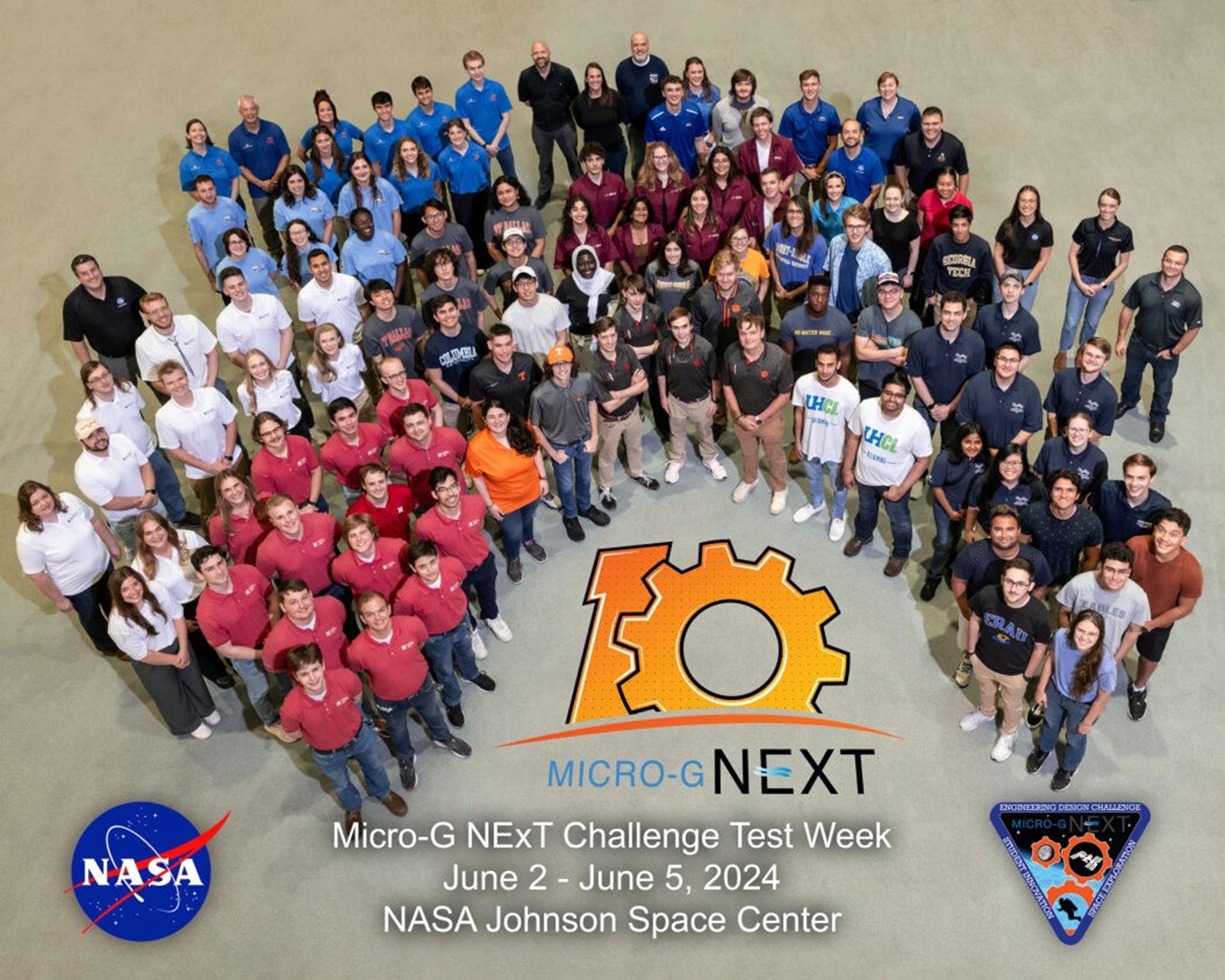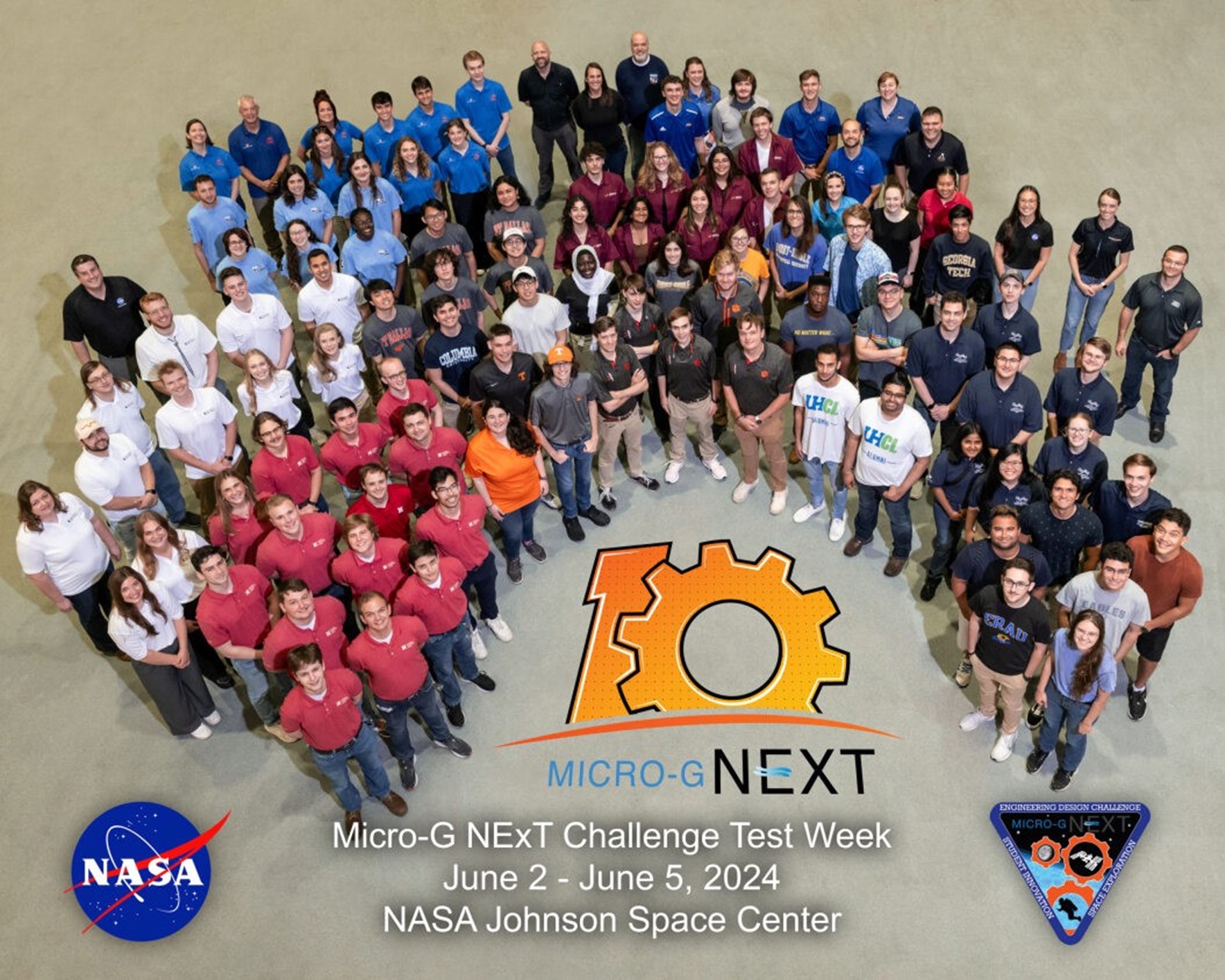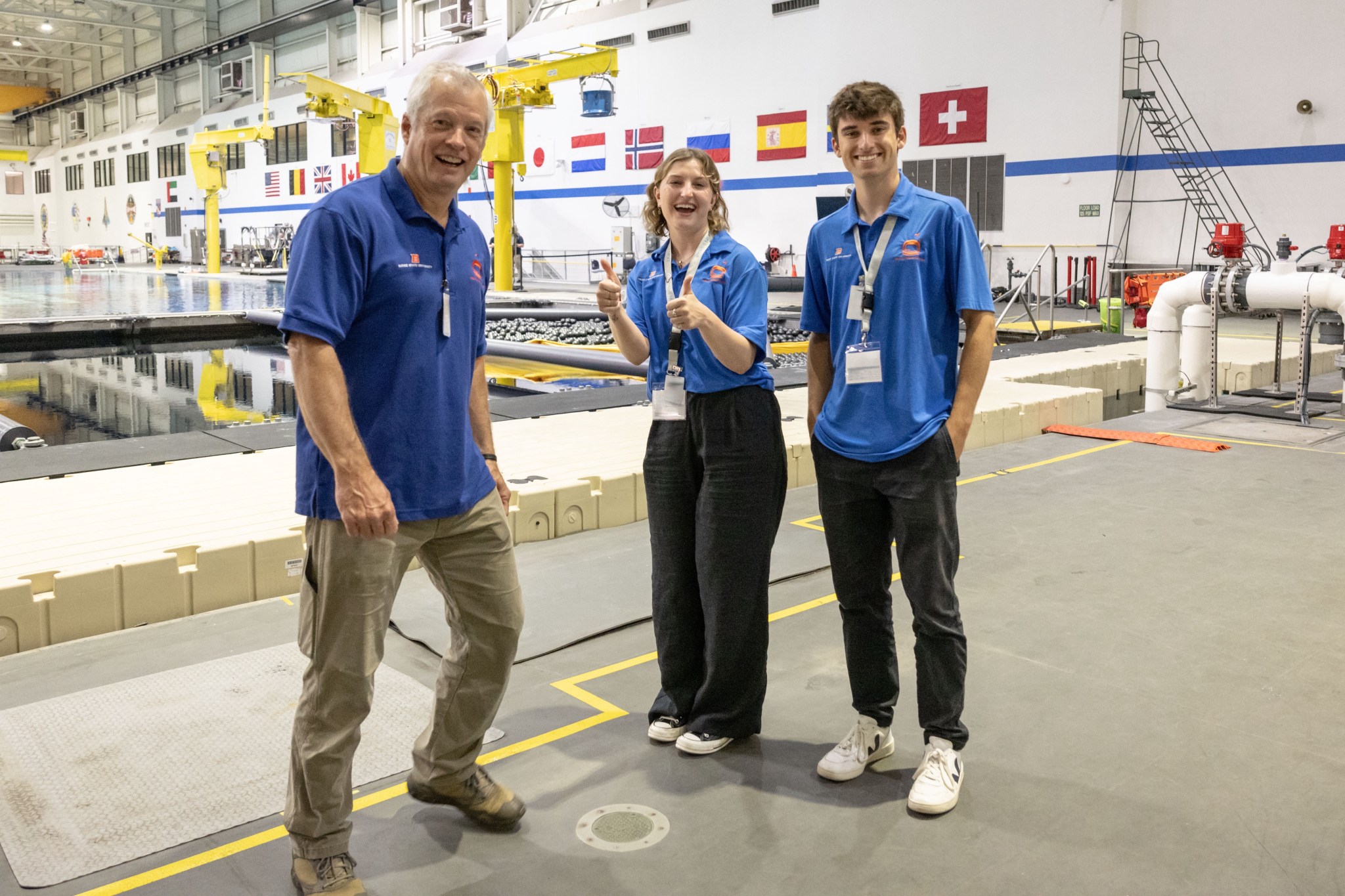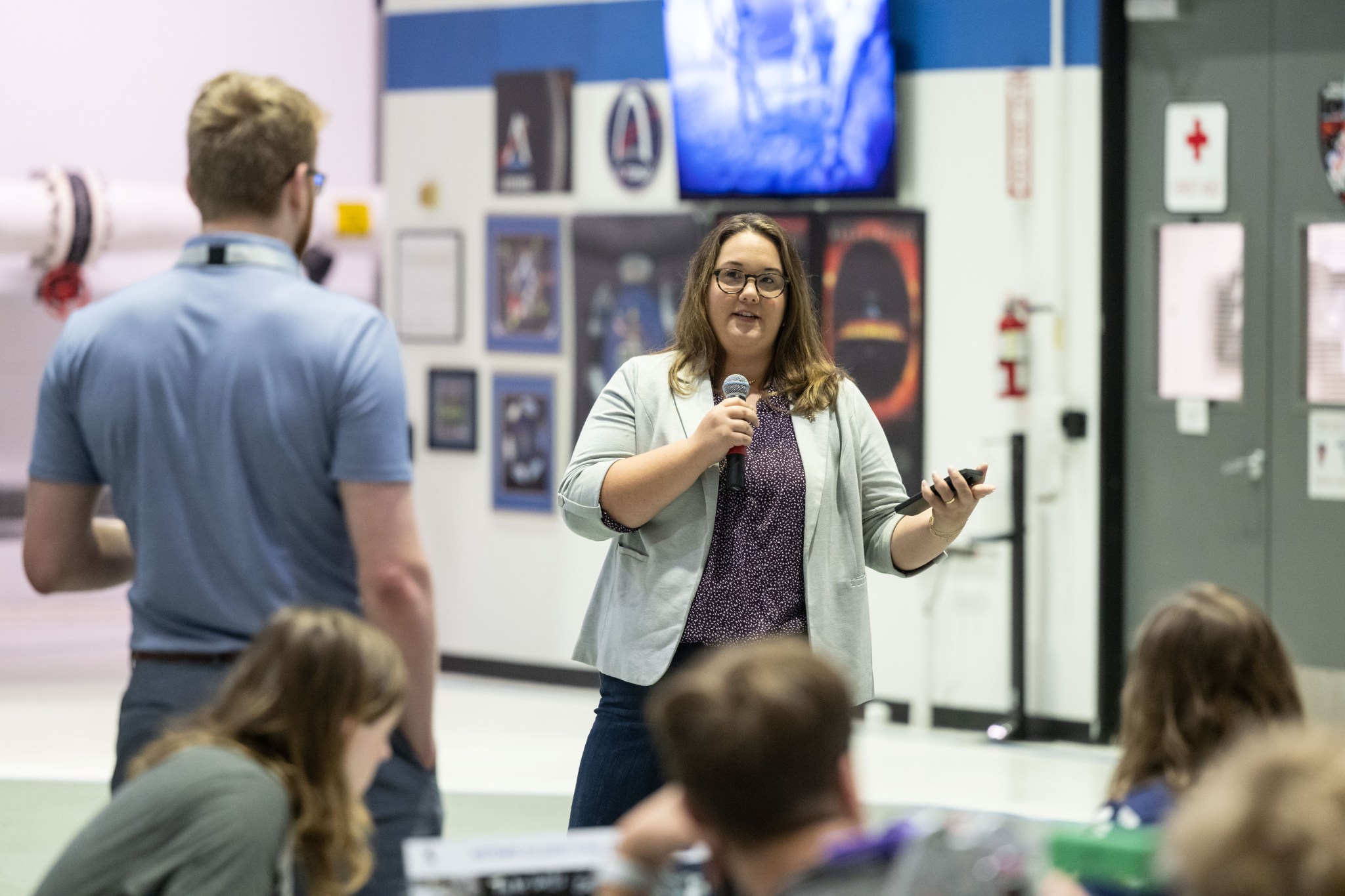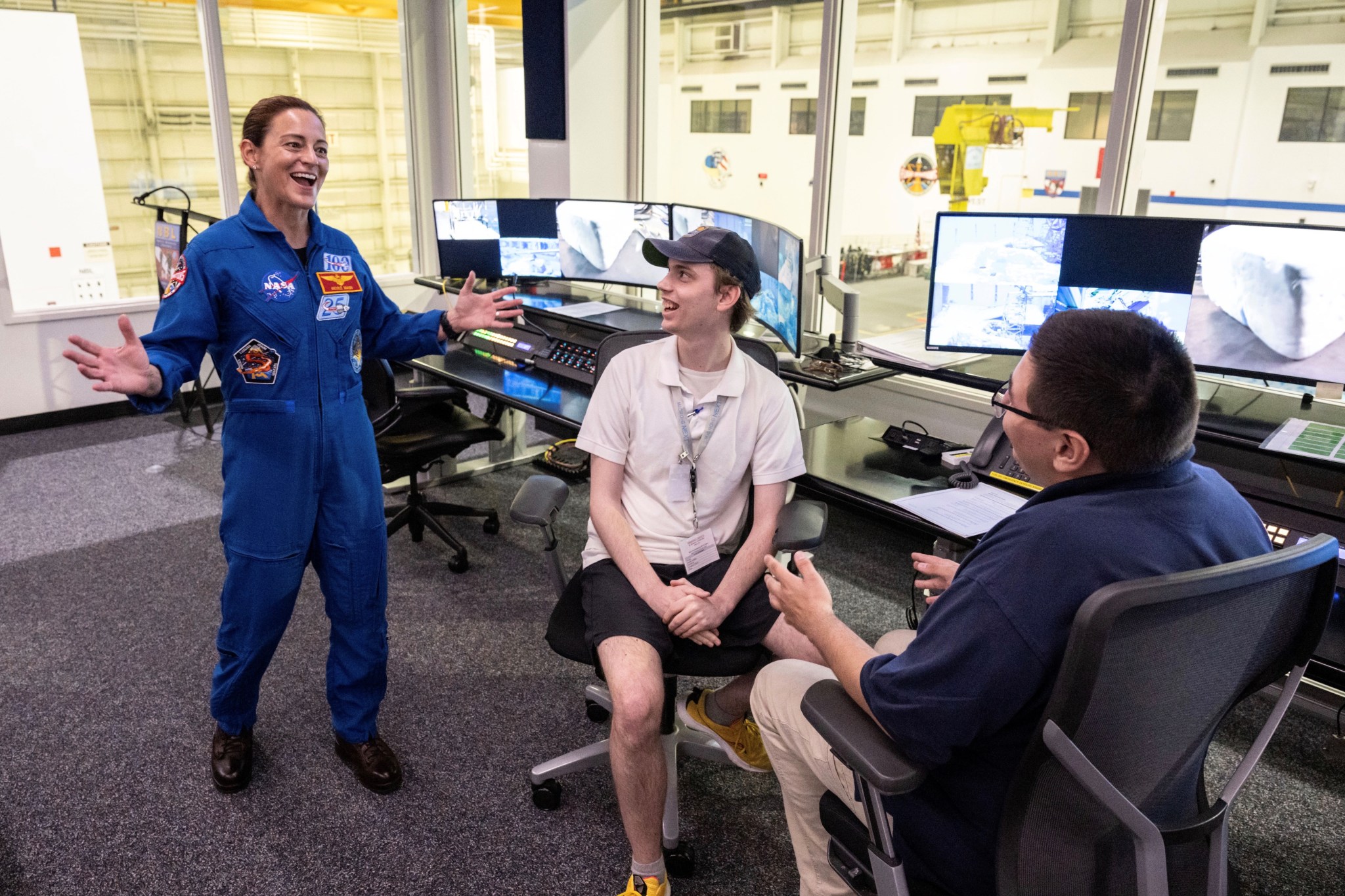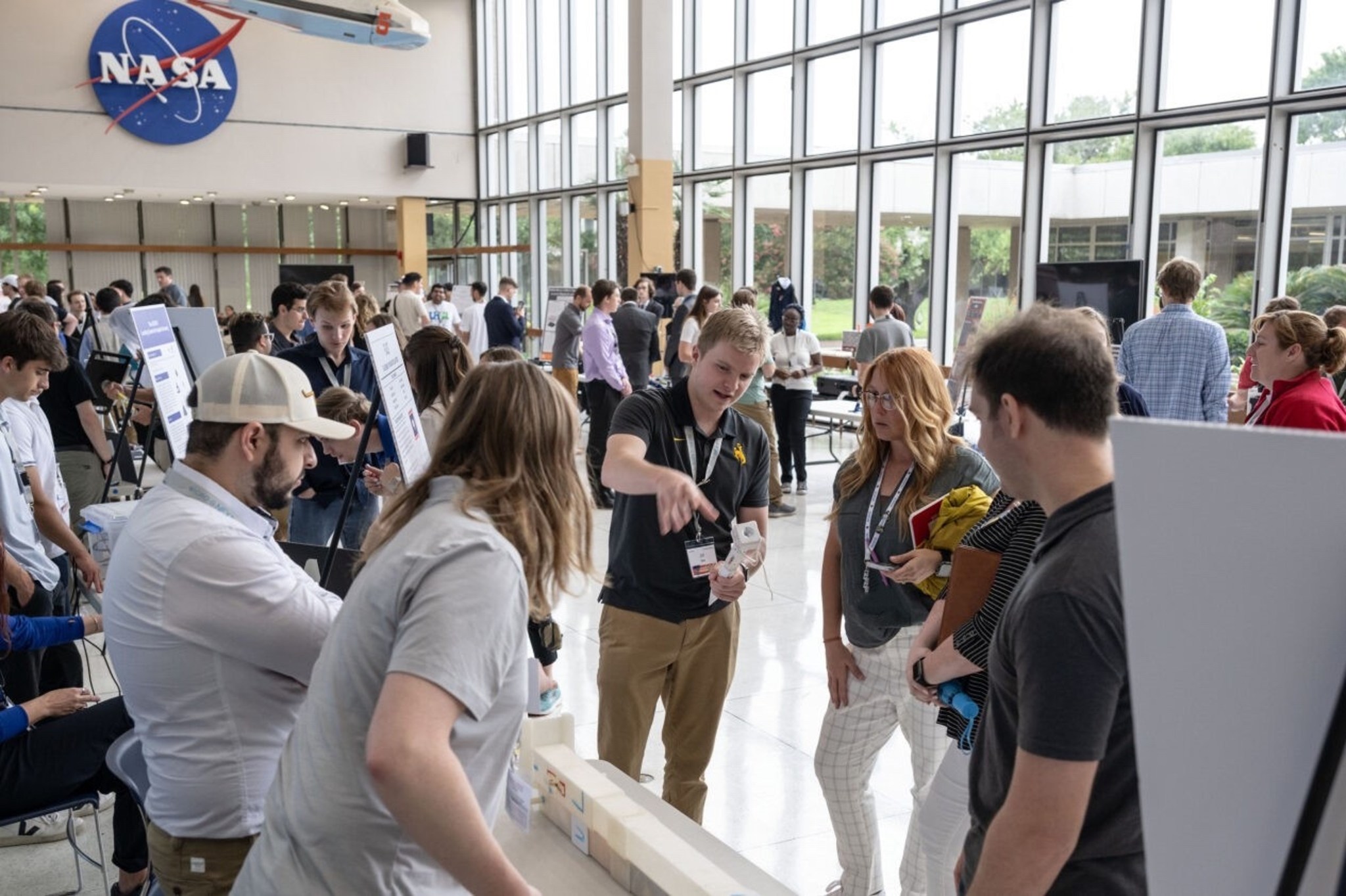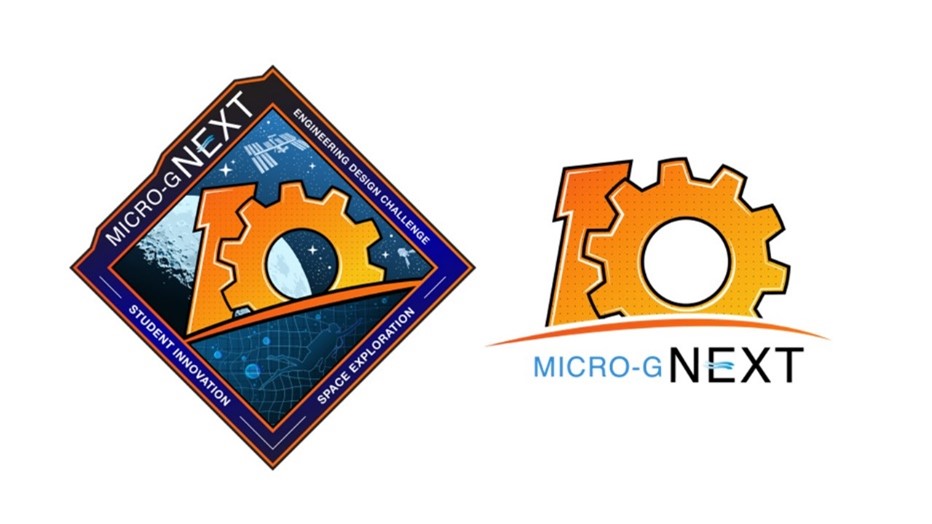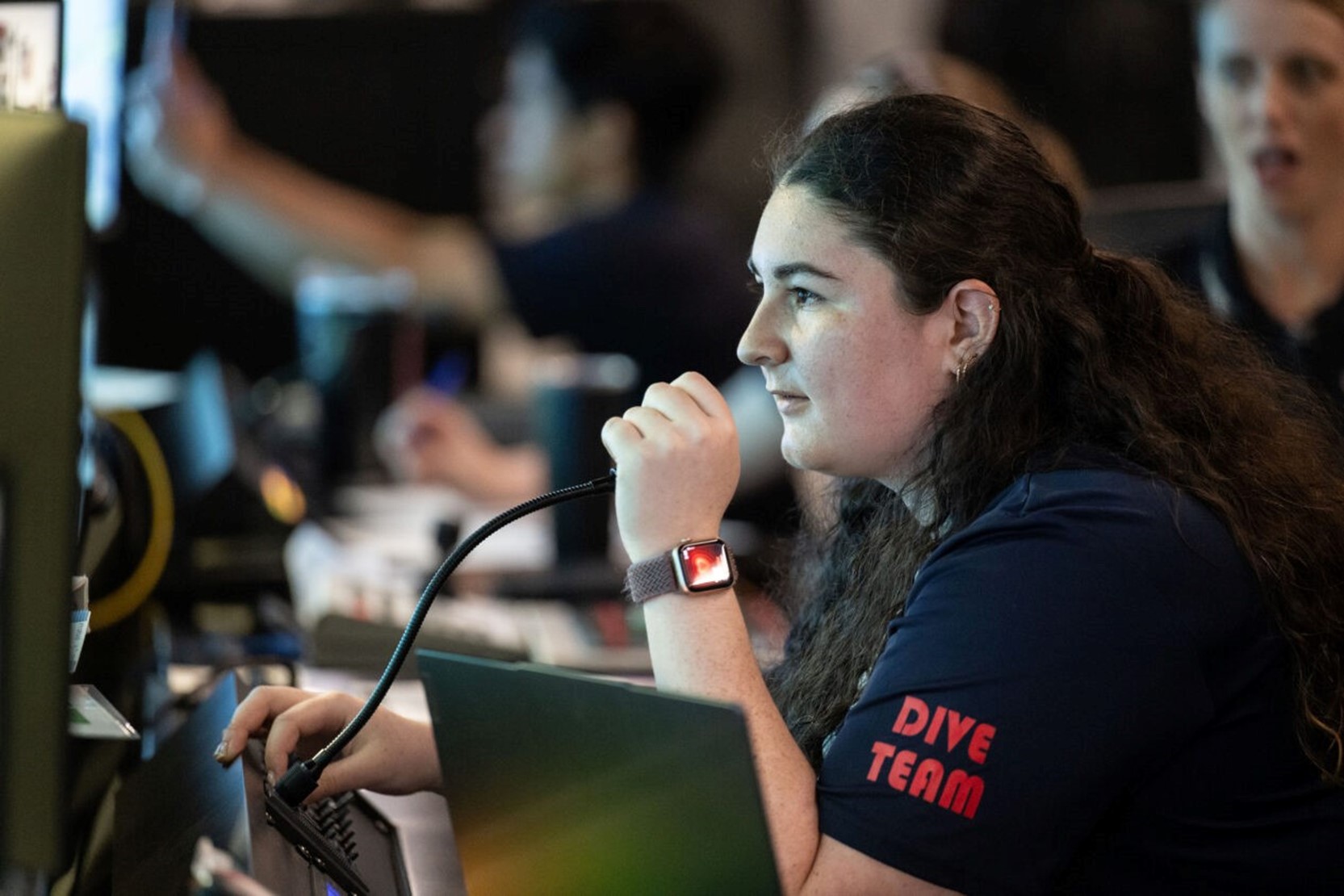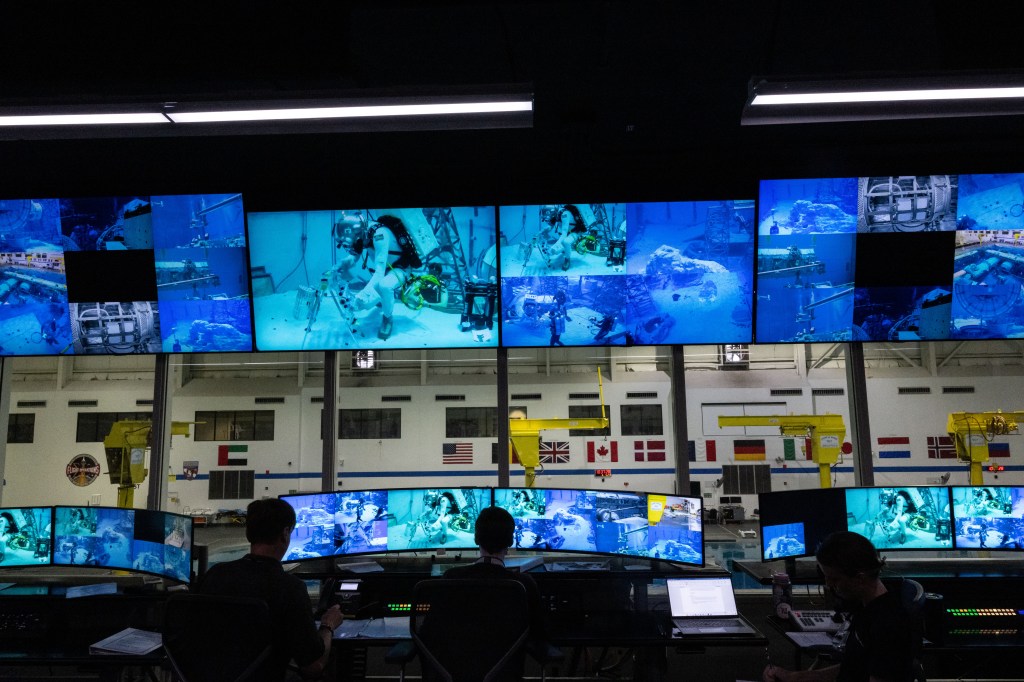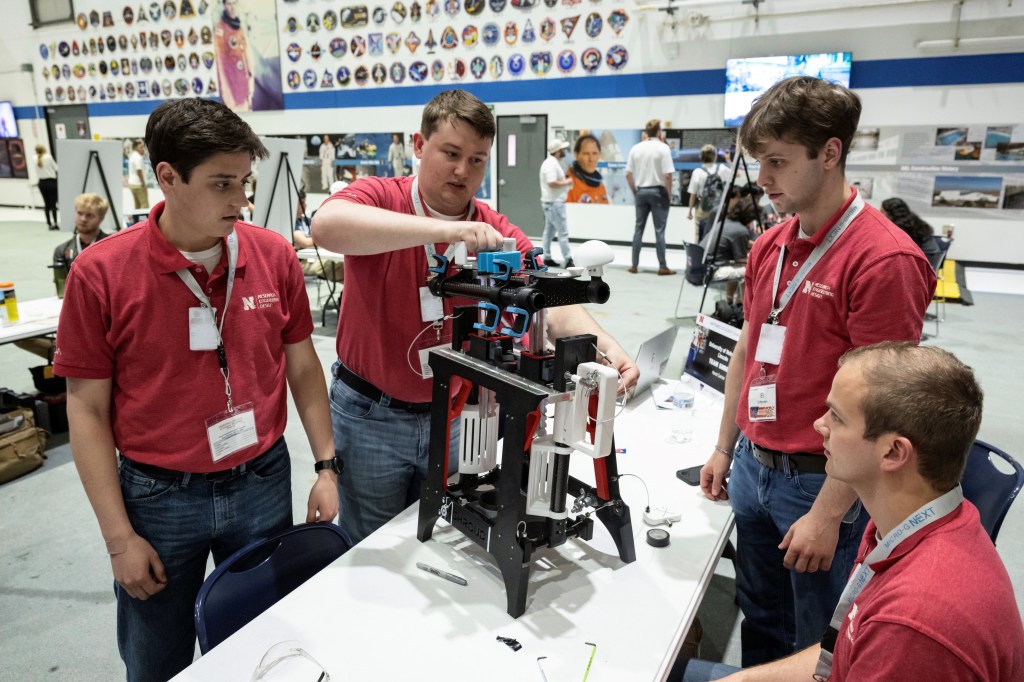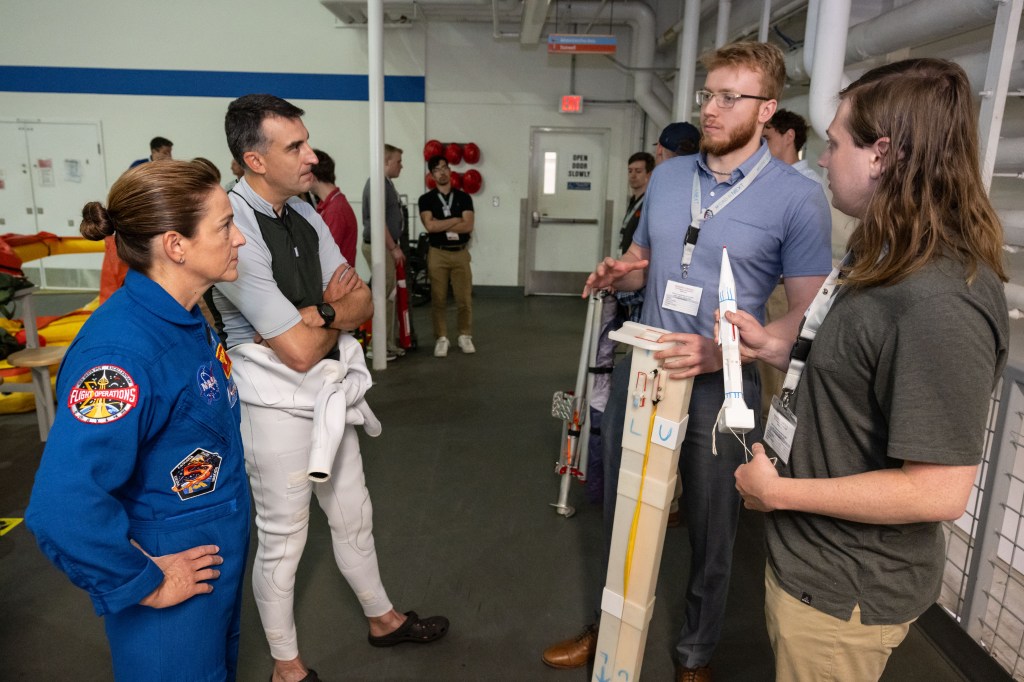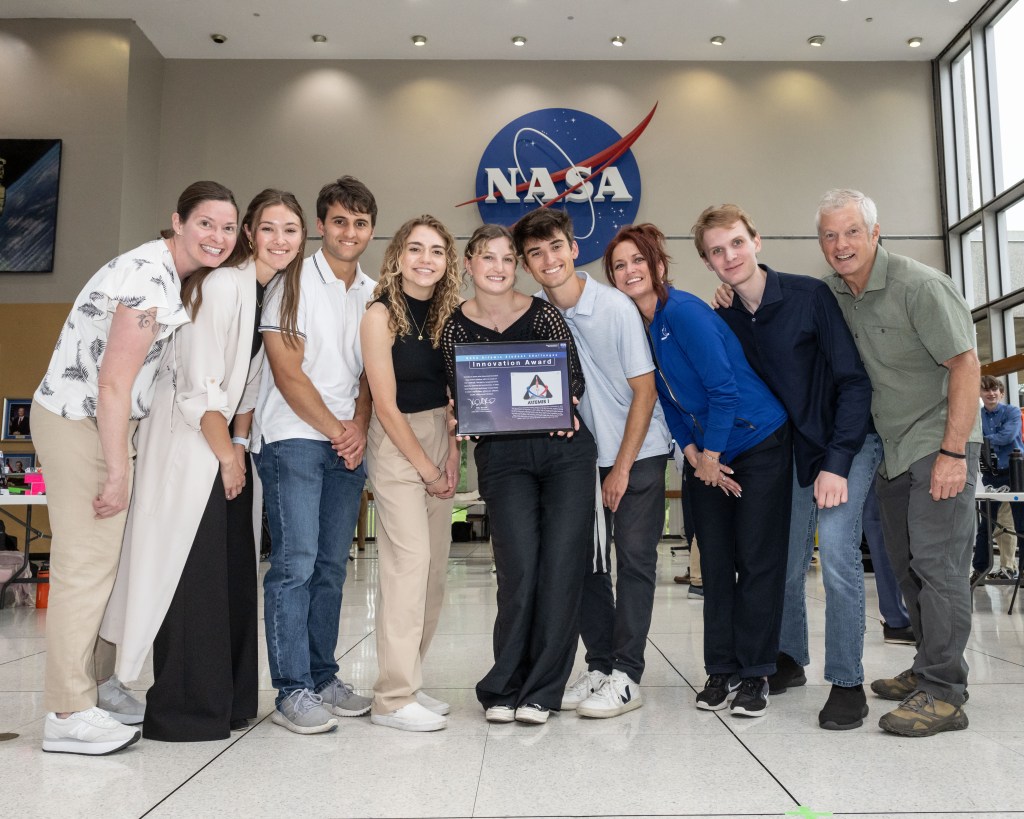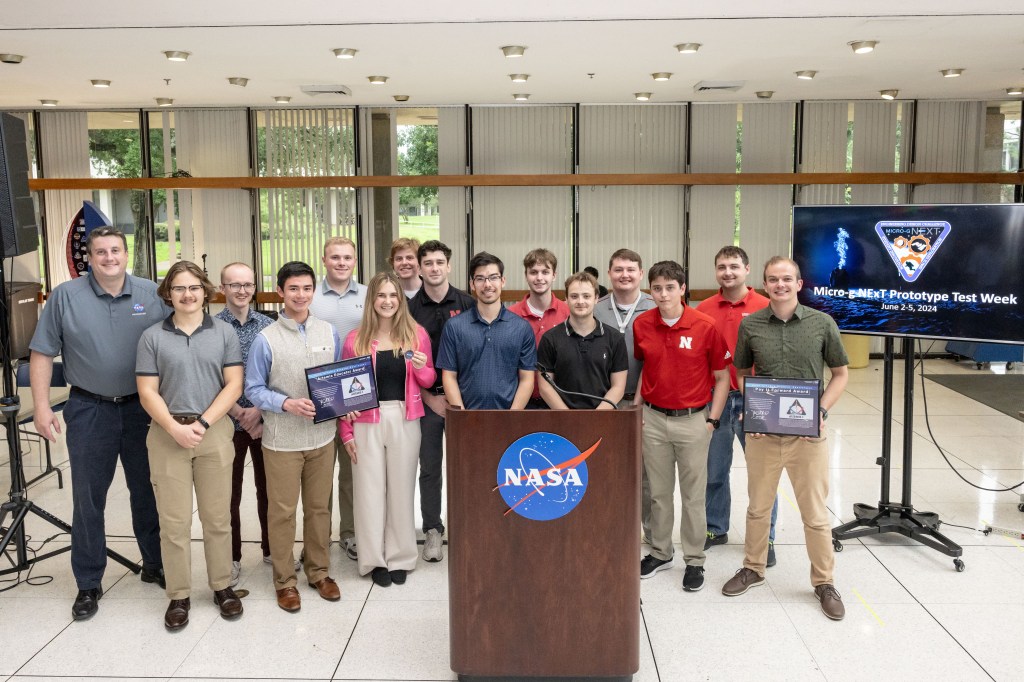Experienced spacewalkers, university students, flight controllers, and NASA team members at all stages of their career recently came together at Johnson Space Center’s Neutral Buoyancy Laboratory (NBL) for an anniversary celebration that looked to the future as much as the past. The Office of STEM Engagement’s Micro-g Neutral Buoyancy Experiment Design Teams (Micro-g NExT) marked a decade of inspiring the next generation of space explorers with four days of exciting hands-on experiences and events commemorating those who have shaped the annual challenge.
From June 2-5, NASA welcomed 17 student teams from 13 U.S. colleges and universities to the NBL for a once-in-a-lifetime opportunity. The 87 students spent months designing and building devices or tools that could support lunar surface spacewalks and future Artemis missions, earning a chance to test their unique prototypes at the NBL.
Teams chose from four design challenge options – create an anchoring device for a lunar flagpole, design a lunar mapbook, develop a lunar tool carrier, or create a target recognition system camera for post-landing search and rescue operations – and submitted technical proposals for Micro-g NExT staff to review in October 2023. The selected student teams were announced in November and introduced to their mentors in December. Those mentors provided continuous support and expertise as teams manufactured their prototypes, submitted their preliminary design review, and completed initial tests prior to traveling to Houston. Mentors represented Johnson organizations including the Flight Operations Directorate, Extravehicular Activity and Human Surface Mobility Program, Engineering, and the Safety and Mission Assurance Directorate.
Another familiar face at Johnson was involved in the challenge, as well: former NASA astronaut Steve Swanson, who was the Boise State University team’s faculty advisor. Swanson is a three-time spaceflight veteran who completed four spacewalks and logged and a total of 195 days in space, which enabled him to provide the students with valuable design insights.
Once they arrived at the NBL, students received a pre-test briefing from Flight Director Rebecca Wingfield about best practices for communication from a mission control perspective. She also debriefed with teams to provide students with feedback that enhanced their learning experience and gave them a deeper understanding of their projects’ impact on the Artemis campaign.
NASA astronaut Nicole Mann supported students in the test control room as they underwent testing and were in direct communication with the diver using their prototype in the pool. Mann also conducted a series of post-test debriefs with several teams to give them insight on how their designs were helpful and how they can improve.
Students also had the opportunity to participate in a poster session at Johnson’s Teague Auditorium to showcase their products and the process from proposal to completion of testing. Artemis Student Challenge Awards were presented to top teams in three categories – Innovation, Pay it Forward (for community engagement and outreach), and Artemis Educator (for a team’s faculty advisor).
The whirlwind week kicked off with a reception for Micro-g NExT alumni who were recognized for their past efforts and dedication to space exploration. Certificates of appreciation were given to the program’s ‘pioneers’ – the NASA employees, contractors, and interns who helped to create Micro-g NExT 10 years ago.
Several tools made by student teams during prior challenges were on display, including a zip-tie cutter designed by the Lone Star College-Cy Fair team in spring 2019 that was used aboard the International Space Station by European Space Agency astronaut Luca Parmitano. Members of that team shared their Micro-g NExT experience with reception attendees. “It gives students the best real-world experience and learning opportunity I have seen,” said James Philippi.
Students and staff also heard from several Micro-g NExT alumni during a Q&A panel. Panelists included Harriet Hunt, CRONUS flight controller trainee; Aaron Simpson, xEMU Portable Life Support System engineer intern; Alexis Vance, environmental systems flight controller; Kim Wright, electrical, mechanical, and external thermal systems engineer; and Sam Whitlock, spaceflight systems engineering intern at Axiom Space. Each shared how Micro-g NExT impacted them personally and professionally, underscoring the long-term value of participating in the challenge and the program’s ability to attract next-generation talent to the agency.
Adding to this legacy, two of the 2024 Micro-g NExT participants ended their challenge experience by starting work with NASA. Alana Falter from the University of Illinois-Urbana Champaign returned to NASA as a Pathways Intern, and Adrian Garcia from the University of Houston-Clear Lake returned as a contractor with Barrios Technology.
Another nod to the challenge’s impact was a special 10-year patch and logo designed by Justin Robert from the Michoud Assembly Facility through the NASA Spark challenge to commemorate the Micro-g NExT milestone.
“Student design challenges have been a critical pipeline for both NASA internship participants and preparing students to be successful in STEM careers,” said Jamie Semple, NASA activity manager for Micro-g NExT. “By participating in these activities, students have the opportunity to create a product that could be part of spaceflight history, all while building essential skills for the next step in their career.” Semple added, “We also see the challenge’s impact with former participants now becoming our Micro-g NExT challenge owners. These people are now leading the program into the future and continuing the legacy of creating leaders in the STEM workforce and for the NASA community.”
Reflecting on their experience, Smith Juback from Clemson University said working cooperatively with teammates was their favorite part of this design challenge. “We all had different ideas and ways to solve different problems and being able to incorporate everyone’s ideas together made us all smarter in the end,” he said. “I think we all learned so much individually about how to make and design a product, and we grew as people, students, and designers.”
Students from the University of Nebraska-Lincoln team said, “Working with astronauts in a professional environment like the Neutral Buoyancy Laboratory is about precision since time is so valuable and you have to make the most of it. Back at home, we have several hours to test our project and if it breaks it breaks. But in the NBL, we have 12 minutes to run through seven tests. This experience is something you can only get here at Micro-g NExT.”
After four days of learning, testing, and networking, Micro-g NExT has reached a decade of providing greater knowledge and inspiration to youth across the country. As one of NASA’s Artemis student challenges, Micro-g NExT will continue to offer undergraduate students the opportunity to design and create mission-ready hardware to benefit the future of deep space exploration. Learn more about Micro-g NExT and other Artemis student challenges at https://stem.nasa.gov/artemis/.
